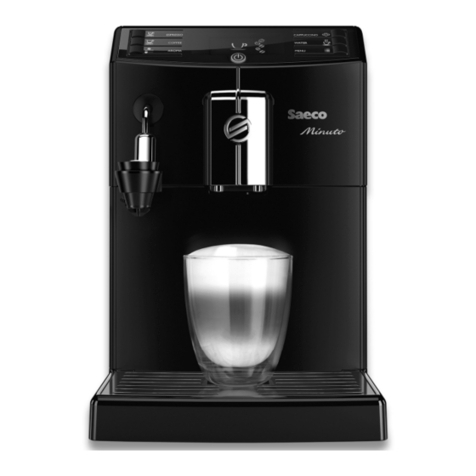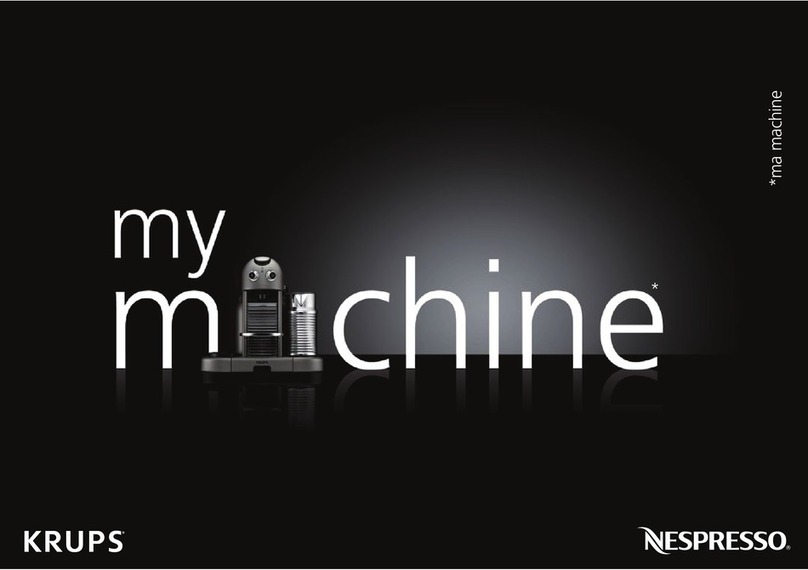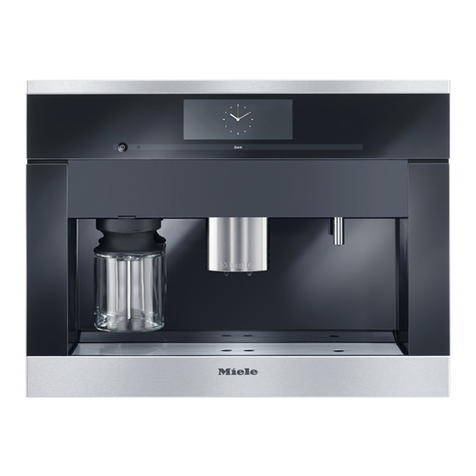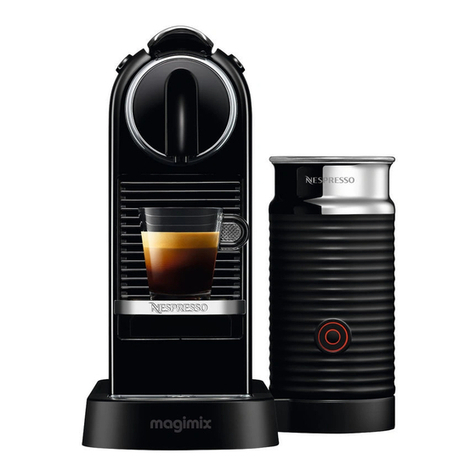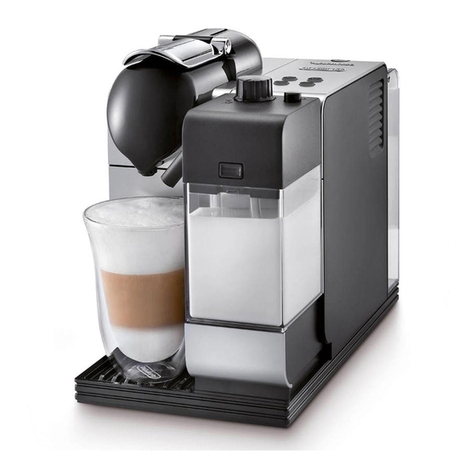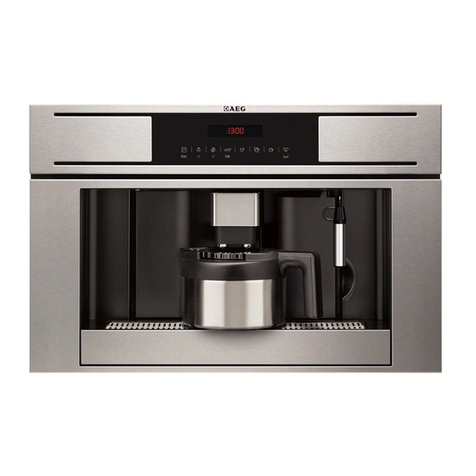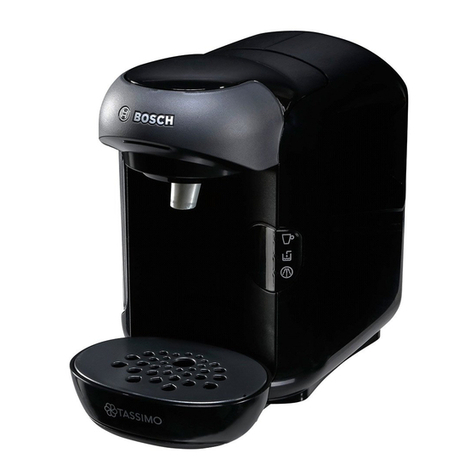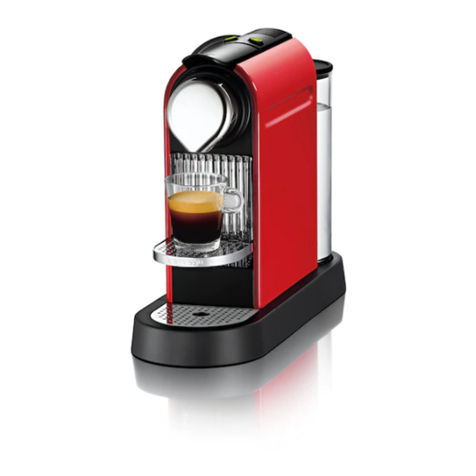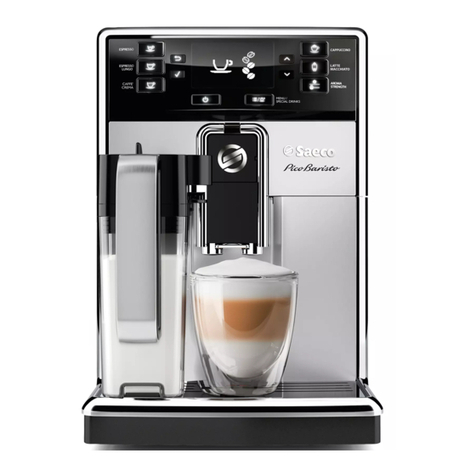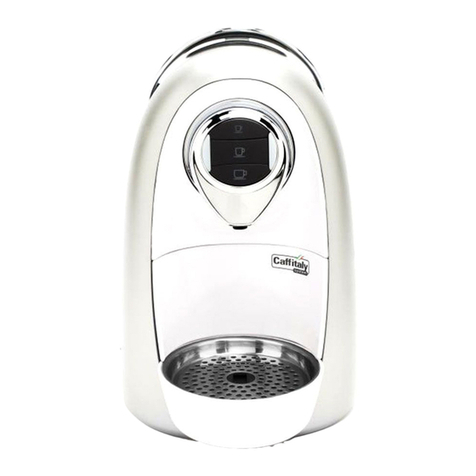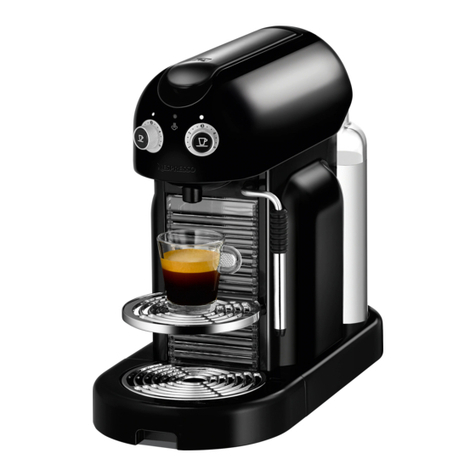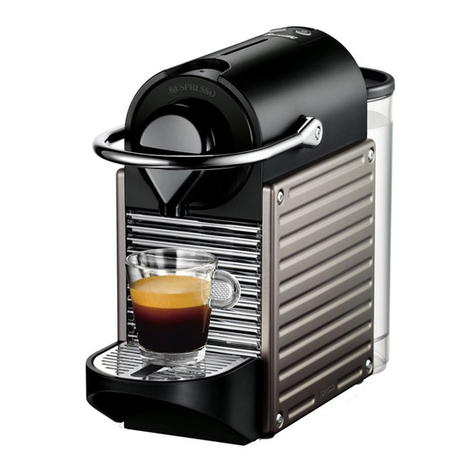
Action Lady 7
rev.4 - 08/2004
Come fare l’espresso
Togliete il portafiltro dal gruppo e gettate il fondo battendo il bordo del portafiltro sulla barra dell’apposito cassetto.
Non battete il portafiltro contro una superficie non protetta; la tenuta del portafiltro potrebbe danneggiarsi. Un colpo deciso dovrebbe essere
sufficiente. La piccola quantità di polvere che resta non influenzerà negativamente il gusto del caffè.
Riempite il portafiltro con caffè macinato finemente, posizionando il portafiltro nell’apposita sede alla base del macinadosatore e tirando la levetta
una volta per un solo caffè e due volte per la doppia dose. Attenzione: ricordatevi sempre di tirare la leva del macinadosatore fino in fondo; poi
lasciatela tornare da sè in posizione di riposo.
Una volta riempito il portafiltro, pressate il caffè macinato con l’apposito pressino, spingendo all’insù il portafiltro. Pulite con il palmo della mano il
bordo del portafiltro per eliminare l’eccesso di polvere di caffè. In questo modo sarete certi che la tenuta fra il portafiltro e la macchina sarà
perfetta.
Nel caso in cui si dispone di un filtro ad uso misto, è possibile inserirVi una cialda di caffè anzichè il caffè macinato. Nel caso invece in cui si
dispone di un modello a cialda, inserire una cialda di caffè nel filtro.
Agganciate il portafiltro nel gruppo della macchina, ruotando fino a che sia fissato. Non stringete troppo, altrimenti sarà difficile da togliere dopo
l’erogazione. Dopo aver agganciato correttamente il portafiltro, ponete una tazza, precedentemente scaldata, sotto il beccuccio. Nel caso di
portafiltro doppio, usate due tazze. Azionate il gruppo premendo l’interruttore (part.2 fig.1).
Non appena raggiunta la quantità di caffè desiderata, premete ancora l'interruttore per arrestare l'erogazione, togliete la tazza e servite.
Erogazione acqua calda
Per erogare acqua calda dal relativo beccuccio (part.15 fig.1), premere il pulsante erogazione acqua calda (part.3 , fig.1). Dopo aver ottenuto
la quantità d’acqua desiderata, rilasciare il pulsante.
Come fare il cappuccino
Accendere la caldaia vapore, premendo il pulsante luminoso (nr. 11, fig. 1): si accende la spia della caldaia (nr.16, fig.1). Immergere il tubetto
prelievo latte (part.13, fig.1) in un contenitore con latte fresco (max. +4°C) e attendere che la spia rossa (part.16, fig.1) sia spenta. Ora porre sotto
il cappuccinatore (part.12, fig.1) una tazza per cappuccino, contenente una dose di caffé espresso appena erogato, e premere l'interruttore
cappuccino (part.4, fig.1). Ottenuta la quantità desiderata, premere nuovamente l'interruttore cappuccino per arrestare l'erogazione. Si consi-
glia di spegnere la caldaia vapore, premendo sempre il corrispondente interruttore (nr.11, fig.1), quando non si prevede di erogare cappuccini
per un certo lasso di tempo.
N.B.: Per regolare la quantità d’aria per l’emulsione del latte, agire sul perno di regolazione (part.3, fig.2): ruotandolo, si diminuisce o si aumenta
la schiuma. Per regolare la temperatura del latte in erogazione, agire sulla vite del riduttore flusso latte (part.5, fig.2). Ruotando la vite in senso
orario si diminuisce il flusso e aumenta la temperatura del latte.
MANUTENZIONE
Operazioni di pulizia giornaliera
Da effettuare preferibilmente la sera:
- Pulire doccetta, guarnizione sottocoppa e guide portafiltro dei gruppi erogatori con un pannospugna.
- Sciacquare filtri e portafiltri in acqua calda con l’aggiunta di detergente specifico, per sciogliere i depositi grassi del caffè.
- Lavare la vaschetta di scarico e la griglia poggiatazze (part.8 fig.1) con dell’acqua.
- Pulire accuratamente la lancia del vapore usata per riscaldare bevande subito dopo l’uso, onde evitare il formarsi di incrostazioni che possono ottu-
rare i fori del diffusore ed evitare inoltre che bevande di diversa natura riscaldate in precedenza possano alterare il sapore delle bevande in riscal-
damento.
Come pulire il cappuccinatore
- Dopo l'ultima erogazione di cappuccino, immergere il tubetto di aspirazione latte (part.4, fig.2) in un bicchiere con acqua e premere l'interruttore
cappuccino (part.4, fig.1) ed erogare acqua per qualche secondo. Dopo di che sfilare il cappuccinatore (part.1, fig.2), togliere il coperchio
(part.2, fig.2) e immergere il tutto in un contenitore con una soluzione di detergente per stoviglie (asportare prima eventuali depositi solidi del
latte), lavare e risciaquare abbondantemente con acqua corrente, quindi riposizionare il cappuccinatore nella sua sede.
Operazioni di pulizia settimanali
- Pulizia serbatoio: riempire il serbatoio (part.10 fig.1) con dell’acqua e versarvi 3 o 4 cucchiaini di acido citrico o di aceto; lasciare questa miscela nel
serbatoio finchè esso sarà ben pulito. Svuotare poi il serbatoio facendo uscire parte dell’acqua dalla coppa porta-filtro (part.6) e parte dal beccuccio
acqua calda-vapore (part.12). Ripetere l’operazione di lavaggio, rimpendo il serbatoio di sola acqua.
Attenzione: è opportuno cambiare spesso l’acqua della caldaia nelle macchine con caldaia di piccola capacità.
- Pulizia carrozzeria: usare un panno umido (non abrasivo). Non usare assolutamente alcool o solventi sulle parti scritte o verniciate.
